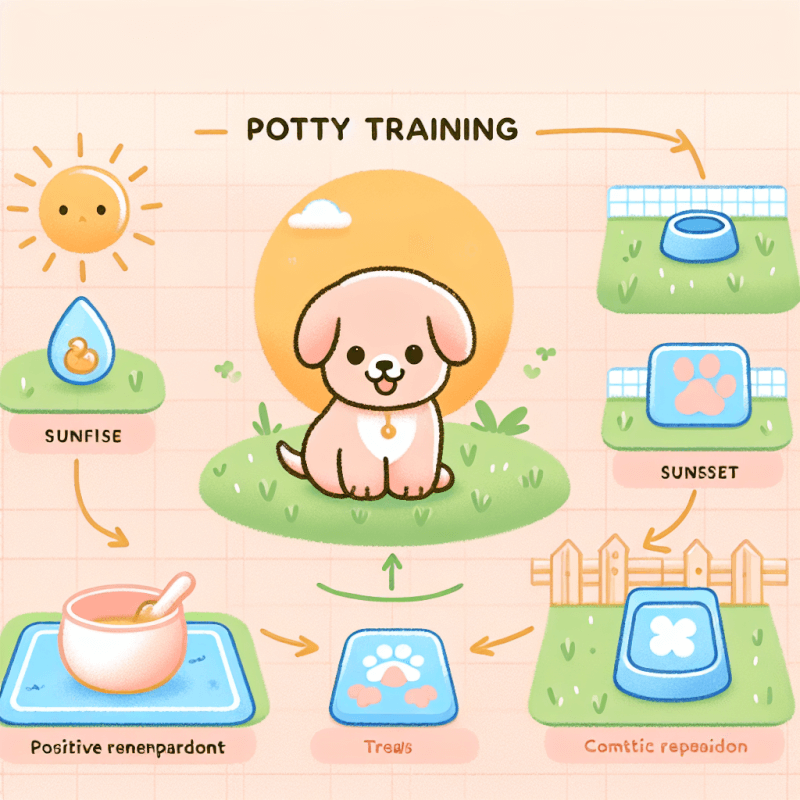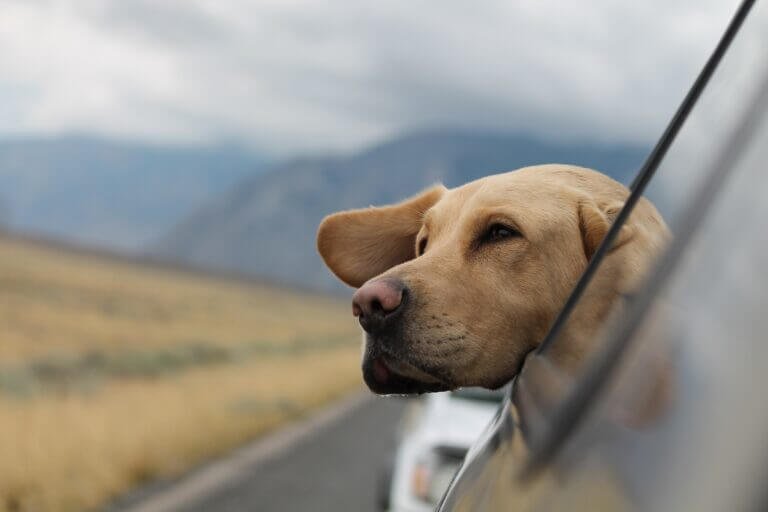So you’ve got a new furry friend in the form of a playful puppy, but now comes the not-so-exciting task of potty training. Don’t worry, because in this article, you’ll learn some effective and friendly tips on how to train your puppy to do their business outside. Whether you’re a first-time pet owner or just in need of a refresher, we’ve got you covered with practical advice and gentle techniques to make this process as smooth and stress-free as possible. Get ready to say goodbye to indoor accidents and hello to a well-trained, happy pup!
Establish a Routine
Create a Consistent Schedule
Creating a consistent schedule is essential for potty training your puppy. Set designated times throughout the day for your puppy to go outside, such as before and after meals, as well as first thing in the morning and before bedtime. By following a consistent schedule, your puppy will learn when it is appropriate to go potty and will be less likely to have accidents indoors.
Ready for Cat Trivia?
Test your knowledge about cats!

Take Your Puppy Out Regularly
In addition to following a schedule, it is crucial to take your puppy outside regularly. Young puppies have smaller bladders and shorter control over their bodily functions, so they will need to go outside more frequently. Make it a habit to take your puppy out every hour or so, gradually increasing the time interval as they get older. This will help prevent accidents and reinforce the routine of going potty outside.
Use Verbal Cues
Teaching your puppy verbal cues can help them understand what you expect from them. Choose a simple phrase like “go potty” or “do your business” and use it consistently when you take your puppy outside to eliminate. Say the cue phrase immediately before your puppy starts to go potty, and then praise them enthusiastically. Over time, your puppy will associate the cue phrase with the act of going potty, making it easier for them to understand your expectations.
Choose a Designated Elimination Area
Select a Suitable Outdoor Spot
Choosing a suitable outdoor spot for your puppy to eliminate is crucial. Look for an area away from high-traffic areas where your puppy can feel comfortable and safe. Make sure the spot is easily accessible, especially during bad weather or when you may be in a hurry. Avoid areas with chemicals or toxins that could harm your puppy.
Create a Specific Bathroom Area
Consider creating a specific bathroom area in your yard for your puppy. This can be a designated patch of gravel, grass, or a specific spot in your garden. By consistently bringing your puppy to the designated area, they will learn that this is where they should go to relieve themselves.
Use Odor Neutralizers
Accidents happen, especially during the early stages of potty training. To prevent your puppy from repeatedly eliminating in the same spot indoors, it is essential to thoroughly clean up accidents and neutralize any lingering odors. Use pet-friendly, enzymatic cleaners specifically designed to eliminate the scent of urine and feces. This will help discourage your puppy from returning to the same spot to eliminate again.
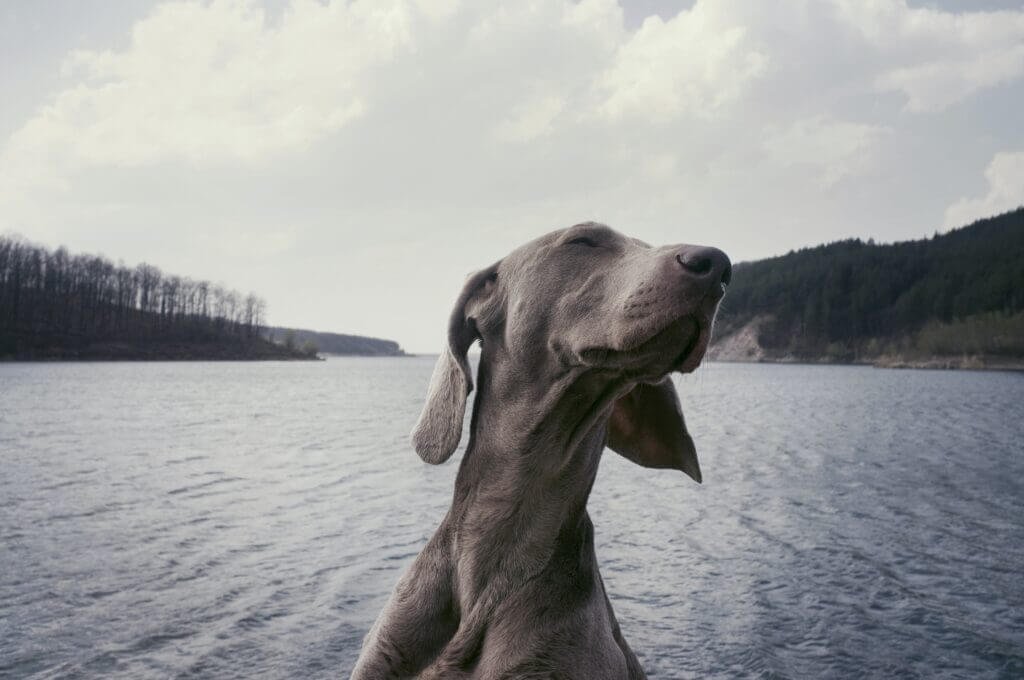
Monitor Your Puppy’s Behavior
Watch for Signs of Needing to Go
Observing your puppy’s behavior and learning to recognize signs that they need to go potty is essential for successful training. Some common signs include restlessness, sniffing the ground, circling, or suddenly stopping activities. If you notice any of these signs, immediately take your puppy outside to their designated elimination area.
Keep an Eye on Post-Potty Behavior
After your puppy eliminates outside, pay attention to their behavior. A common misconception is that once a puppy goes potty, they are done. However, puppies often need to eliminate more than once during a single outing. Stay with your puppy and observe if they show signs of needing to go again. By giving them the opportunity to fully empty their bladder and bowels, you reduce the risk of accidents indoors.
Reward Good Behavior
Positive reinforcement is a powerful tool in training your puppy to go potty outside. When your puppy successfully eliminates in the designated area, immediately reward them with treats and praise. Make sure to offer the reward right after they finish eliminating, so they associate the reward with the act of going potty. This positive reinforcement will encourage your puppy to repeat the behavior in the future.
Crate Training for Potty Training
Utilize a Properly Sized Crate
Crate training can be a valuable tool in potty training your puppy. Ensure that the crate is appropriately sized, providing enough room for your puppy to stand, lie down, and turn around comfortably. A crate that is too large may lead to your puppy eliminating in one corner and sleeping in another. By using a correctly sized crate, you can take advantage of your puppy’s natural instinct to keep their sleeping area clean.
Establish Gradual Crate Training
Introduce your puppy to the crate gradually. Start by leaving the door of the crate open and placing treats, toys, and bedding inside to create a positive association. Encourage your puppy to enter the crate voluntarily and reward them with praise and treats. As your puppy becomes comfortable, gradually close the door for short periods of time, gradually increasing the duration. This will help your puppy become accustomed to being in the crate without feeling anxious or stressed.
Take Advantage of Crate Instincts
Dogs have a natural instinct to keep their sleeping area clean. Utilize this instinct by using the crate as part of your potty training routine. When your puppy is not supervised, place them in the crate to prevent accidents indoors. Take them outside to eliminate immediately after letting them out of the crate. By consistently associating the crate with the need to go potty, your puppy will learn to control their bladder and bowels.
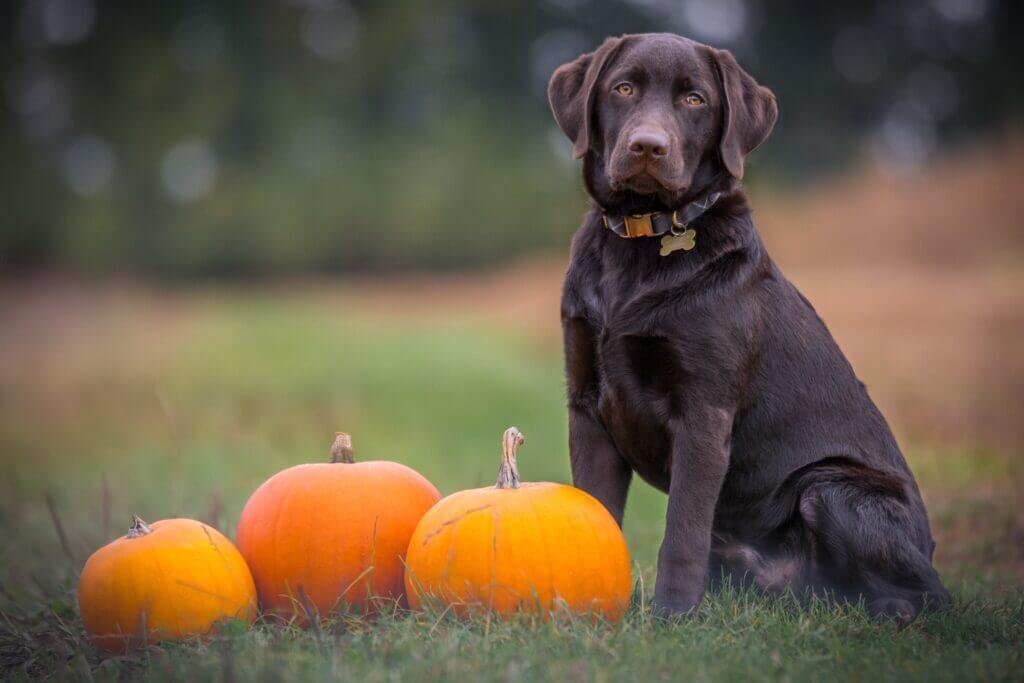
Utilize Positive Reinforcement
Reward with Treats and Praise
Positive reinforcement is a crucial aspect of potty training your puppy. Whenever your puppy successfully goes potty outside, reward them with treats and praise. Choose small, easily consumable treats that your puppy loves and provide immediate positive feedback. This positive association will motivate your puppy to repeat the desired behavior.
Create a Positive Association with Going Outside
Make going outside for potty breaks an enjoyable experience for your puppy. Use a happy and enthusiastic tone when you say the verbal cue phrase and when you take them to their designated elimination area. Play with them or offer a small play session after they have successfully gone potty. Creating a positive association with going outside will make your puppy more eager to go potty in the designated area.
Avoid Punishments or Negative Reinforcement
It is important to avoid punishing or scolding your puppy for accidents or mistakes during the potty training process. Punishments or negative reinforcement may create fear, anxiety, and confusion in your puppy. Instead, focus on positive reinforcement, redirection, and consistency to encourage desired behaviors. Training should be a positive and rewarding experience for both you and your puppy.
Consistency is Key
Stick to the Same Schedule Every Day
Consistency is crucial in potty training your puppy. Stick to the same schedule every day, as this will help your puppy understand and anticipate when they need to go outside. By establishing a routine, you provide your puppy with structure and reinforce the desired behavior of eliminating outside.
Use the Same Verbal Cues and Commands
Consistency extends beyond the schedule to the verbal cues and commands you use. Use the same verbal cues and commands every time you take your puppy outside to eliminate. This consistency will help your puppy associate the cues with the desired action, making it easier for them to understand your expectations.
Enlist Others to Follow the Routine
If there are multiple people involved in caring for your puppy, it is essential to ensure everyone follows the same routine. Make sure each person knows the schedule, verbal cues, and commands that you are using. Consistency from all family members or caregivers will reinforce the potty training process and prevent confusion for your puppy.
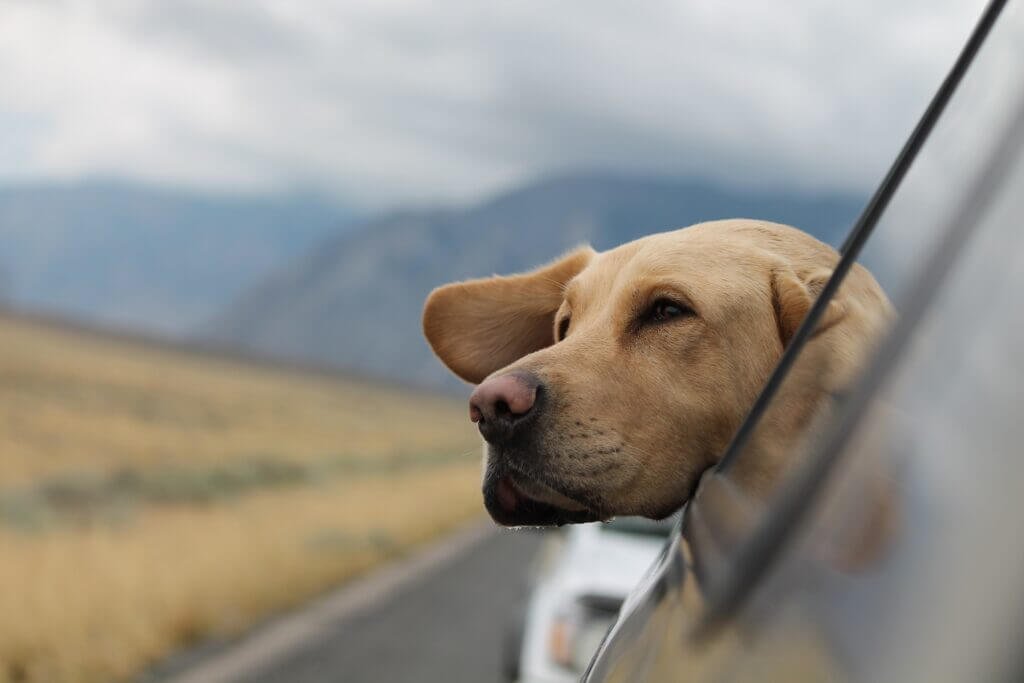
Accidents Happen
Do Not Punish or Scold After Accidents
Accidents are an inevitable part of the potty training process, especially with young puppies. It is important not to punish or scold your puppy after an accident. Punishment can cause fear and anxiety, and it may hinder the training progress. Instead, calmly clean up the mess and take note of what might have caused the accident. Adjust your training approach as needed to prevent future accidents.
Clean Up Accidents Thoroughly
Properly cleaning up accidents is essential to prevent your puppy from using the same spot indoors repeatedly. Use pet-friendly enzymatic cleaners to eliminate the scent of urine and feces. Even if you cannot smell the accident, your puppy’s scent receptors are much more sensitive, and they may be drawn to the same spot again. Thoroughly cleaning up accidents will help reinforce the idea that eliminating indoors is not acceptable.
Reevaluate and Adjust the Training Approach
If accidents become frequent or if your puppy is not progressing in their potty training, it may be necessary to reevaluate and adjust your training approach. Consider revisiting the basics, such as monitoring your puppy’s behavior more closely, reinforcing positive behaviors, or seeking professional guidance. It is essential to be flexible and adaptable in your approach to ensure your puppy’s successful potty training.
Addressing Nighttime Potty Training
Limit Water Intake Before Bedtime
To reduce the risk of accidents during the night, it is advisable to limit your puppy’s water intake before bedtime. Offer water throughout the day and take away the water dish a couple of hours before your puppy’s bedtime. This will help minimize the need for nighttime potty breaks and increase the chances of a good night’s sleep for both you and your puppy.
Take Your Puppy Out Before Going to Sleep
Before heading to bed, make sure to take your puppy outside to eliminate. Use the same routine and verbal cues as during the day. This final potty break will provide your puppy with the opportunity to empty their bladder and bowels, reducing the chances of accidents during the night.
Use an Appropriate Sleeping Arrangement
Choosing an appropriate sleeping arrangement for your puppy is essential for successful nighttime potty training. Consider using a crate or a designated area that is easy to clean and will confine your puppy safely. Make sure it is comfortable and enticing for your puppy to sleep in. Using blankets or bedding that can be easily washed will ensure cleanliness if accidents occur.
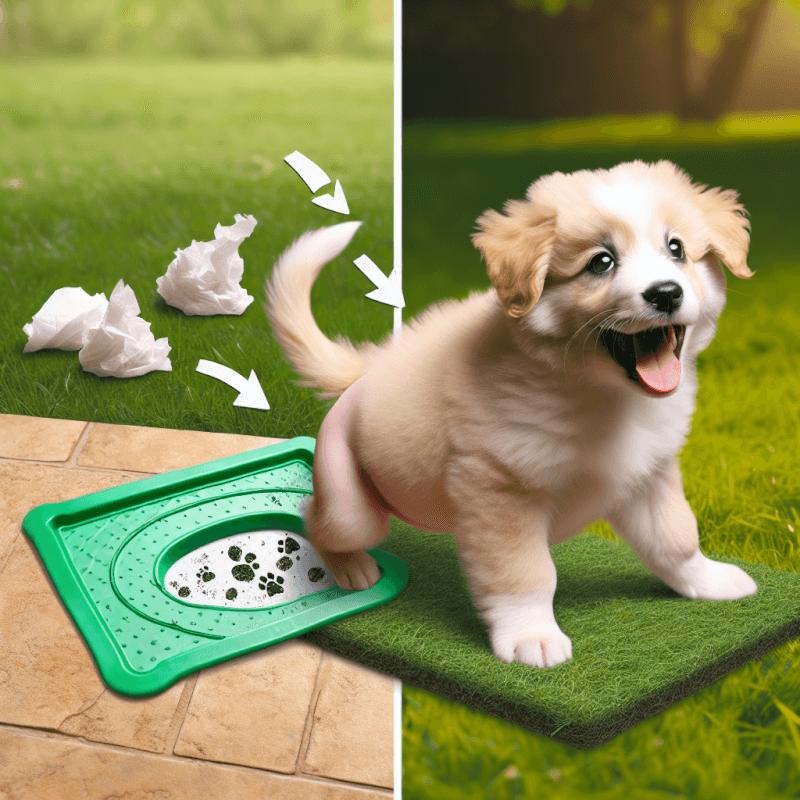
Seek Professional Guidance if Needed
Consult a Veterinarian or Dog Trainer
If you are struggling with potty training your puppy, do not hesitate to seek professional guidance. A veterinarian or a professional dog trainer can provide valuable advice and expertise. They can help determine if there are any underlying health issues contributing to the training difficulties or suggest alternative training methods based on your puppy’s specific needs.
Consider Puppy Training Classes
Puppy training classes are an excellent option for comprehensive training, including potty training. These classes provide a structured environment where your puppy can learn alongside other dogs, with the guidance of an experienced trainer. Furthermore, it allows for socialization and helps reinforce good behavior in various settings.
Get Expert Advice for Specific Challenges
Each puppy is unique, and training methods may need to be adjusted to address specific challenges. Whether it’s excessive accidents, fear-based behaviors, or other issues, seeking expert advice can make a significant difference in your training outcomes. A professional can offer tailored solutions to your puppy’s individual needs, ensuring a successful potty training journey.
Patience and Persistence
Understand that Training Takes Time
Potty training is a process that requires time, patience, and persistence. Every puppy learns at their own pace, so it is important to be understanding and not get discouraged by setbacks or slow progress. Keep in mind that accidents are a normal part of the learning process, and with consistency and positive reinforcement, your puppy will grasp the concept of going potty outside.
Stay Persistent and Consistent
Consistency is key to successful potty training. Stay persistent in following the routine, sticking to the schedule, and reinforcing positive behaviors. It may take weeks or even months for your puppy to become fully potty trained, so it is important to remain committed to the process throughout.
Focus on Building a Strong Bond with Your Puppy
Potty training is not just about teaching your puppy where to eliminate; it is also an opportunity to strengthen your bond. By providing positive reinforcement, praise, and treats, you are not only reinforcing good behavior but also building trust and a strong relationship with your puppy. Enjoy the process and celebrate the milestones together.
In conclusion, potty training your puppy requires patience, consistency, and positive reinforcement. By establishing a routine, choosing a designated elimination area, monitoring your puppy’s behavior, utilizing crate training, utilizing positive reinforcement, and maintaining consistency, you can successfully train your puppy to go potty outside. Remember to address accidents with understanding, seek professional guidance when needed, and remain patient and persistent throughout the process. With time and effort, you will build a strong bond with your puppy and achieve successful potty training.
